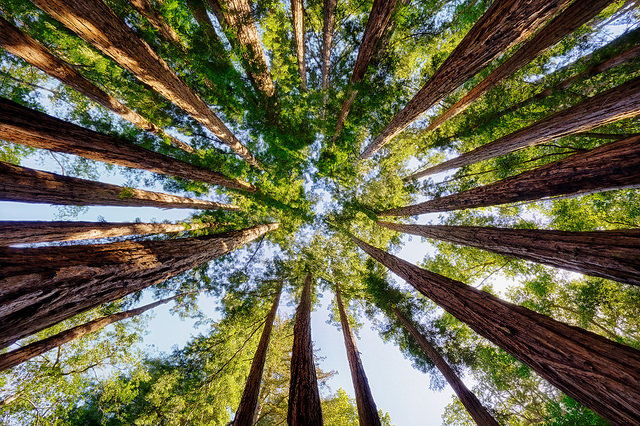The wrong kinds of trees could make global warming worse
Planting homogenous new forests isn’t going to save the planet
Knvul Sheikh • April 19, 2016

Researchers have found that replacing broad leaf species like oak with conifers has increased global warming. [Image credit: Flickr user Max and Dee Bernt | CC BY-SA 2.0]
There is a park near the foothills of the Himalayas, not much more than a stone’s throw away from my childhood home in Pakistan. It is the local watering hole, exercise rink and carbon sink. Solemn trees provide shade, nests for larks, hideaways for mongooses, and a chance to take in a breath of fresh air in the middle of the city. Every spring, there is a tree planting drive to increase the greenery in the park. I remember planting pine saplings there myself as part of one of the drives.
Plant a tree, save the Earth — that’s what we’re all told. But what if it’s not the right type of tree?
Those young saplings could have the opposite effect on the environment. Instead of mitigating the effects of climate change, planting too many dark green coniferous trees — such as pines — could make it worse, according to a study published in the journal Science.
Although reforestation efforts around the globe have effectively increased the overall green canopy, they haven’t done quite as much for the climate. In Europe, forests occupy 10 percent more land than they did two and a half centuries ago, more than counteracting the number of trees cut down to make room for roads, provide timber for buildings and fuel to heating. But the localized surface temperature has actually risen by about 0.2 degrees Fahrenheit (0.12 Celsius) according to the researchers.
Since deforestation accounts for about 11 percent of carbon dioxide emissions, most people assume that planting trees and avoiding further deforestation will be an easy way to capture airborne carbon through photosynthesis, including emissions from cars and factories.
It’s such a beautifully simple solution that tree planting has been a hot topic in the recent Paris climate talks too.
But researchers in the Science study warn that the role trees play in climate is much more complex. “We shouldn’t expect forests to combat the temperature change by themselves,” James Ryder, a postdoctoral ecologist at the Max Planck Institute for Meteorology in Hamburg, Germany, and one of the study’s co-authors said in an interview.
While all trees take in carbon dioxide from the air and replace it with oxygen, forests that are now managed by people are continuously replanted and reorganized for better timber production. So carbon that used to be stored in dead wood and soil in natural forests is now more likely to be released as more wood is harvested.
We’ve changed the kinds of trees in forests, too. In Europe, where over 85 percent of forests are now managed by people, more Scots pine and Norway spruce are planted because they grow faster and provide better lumber. The problem is, this gradual conversion of deciduous forests into coniferous forests has increased evaporation and reduced the amount of solar radiation that the trees reflect back into space, a property known as albedo. Darker coniferous trees like pines and spruce absorb more heat than broadleaf species such as oak and birch, which means they aren’t as helpful in curbing climate change as a more diverse forest with both varieties would be.
“We need to maintain a balance in broadleaf and coniferous trees,” Ryder said, “And continue to search for alternative strategies to manage green house gases, such as banning fossil fuels.”
Perhaps next time I go back home and walk past those young trees and saplings, I’ll make sure that they not only support biodiversity in the wildlife that inhabit the park, but plant some more local species of trees to maintain the biodiversity of the trees themselves. After all, any plan to keep climate change in check should also be smart about how we manage forests.
1 Comment
If the trees removed from forests are used to build things they wont add to the co2 burden. If they are burned they will.